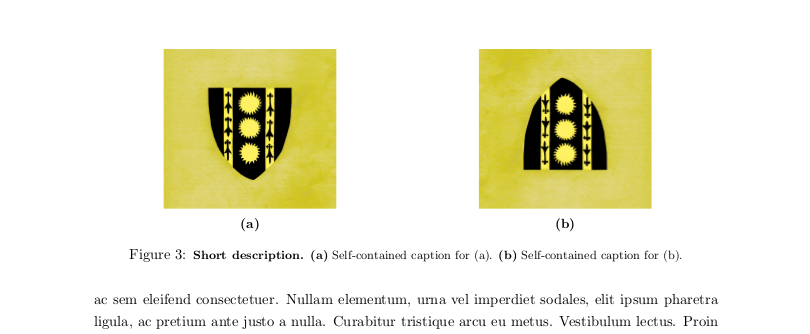Notes on Physics and Mathematics
This page contains a good collection of notes I made on topics in physics and mathematics over the last several years. The format of these notes differs. Some I have linked to typeset pdfs and others are rendered in the html on this page using MathJax.
The main set of notes consist of the two self-contained mini-courses below. The first, on physics, covers the material of standard graduate courses on classical and quantum mechanics. The discussion attempts to develop the two frameworks under a unified view. The second covers mainly differential equations from the perspective of a physicist.
LaTeX Tips
I have collected here a few bits of LaTeX that I have found useful in my writing for future reference.
Placing figures in a report
A report should have good looking figures. The graphicx package is the default for including figures in a LaTeX document. A standard useage looks like
\begin{figure}
\centering
\includegraphics[scale=.3]{imagefile}
\caption{\footnotesize \textbf{Short description.}
Long, self-contained caption.
} \label{fig:image}
\end{figure}
This is quick and easy but I find it often leaves too much white space to the left and right of the figure. We can use minipages to put the caption in this extra space.
\begin{figure}
\qquad
\begin{minipage}[c]{.45\textwidth}
\includegraphics[width=\textwidth]{imagefile}
\end{minipage}
\;
\begin{minipage}[c]{.45\textwidth}
\caption{ \footnotesize \textbf{Short description.}
Long, self-contained caption.
} \label{fig:}
\end{minipage}
\end{figure}
Lastly, if we want to include multiple subfigures we can use the package subcaption.
\begin{figure}
\begin{subfigure}{.5\textwidth}
\centering
\includegraphics[width=\textwidth]{imagefile}
\caption*{\textbf{(a)}}
\label{fig:label}
\end{subfigure}
\begin{subfigure}{.5\textwidth}
\centering
\includegraphics[width=\textwidth]{imagefile}
\caption*{\textbf{(b)}}
\end{subfigure}
\caption{\footnotesize \textbf{Short description. (a)}
Self-contained caption for (a).
\textbf{(b)} Self-contained caption for (b).
} \label{fig:label}
\end{figure}
Making a title page by hand
For anything more than a couple page paper you might want a dedicated title page. The code I used to make the title page of my thesis looked like this:
\begin{titlepage}
\begin{center}
\bfseries
\huge YALE UNIVERSITY
\vskip.2in
\large Department of Physics
\vskip2.5in
\huge SO(3) Invariants of Spherical Functions
\vskip 2.5in
\bfseries\large Student:\par \emph{Joseph Balsells}
\vskip .5in
\bfseries\large Supervisor:\par \emph{Prof. George Fleming}
\end{center}
\end{titlepage}
\thispagestyle{empty}
Making the report look great
You could argue that the point of LaTeX is to make a report look good without doing anything. LaTeX separates the design from the writing. And for professional (journal) articles, the markup is outsourced to the journal. But for reports that never make it to publication we can handle some of the design ourselves. The first thing I like to do is to change the page color. We could make the page color anything we want, but I find something just greyer than white to be much easier to read on a computer (if the report is to be printed, of course we should reset the page color to plain white). We change the page color in the preamble
\usepackage{xcolor}
\definecolor{anti-flashwhite}{rgb}{0.95, 0.95, 0.96}
\pagecolor{anti-flashwhite}
Easy! There is a plain color package but I am not familiar with it and xcolor is supposed to be better. I defined my own color but xcolor has several package options which control whether/how sets of predefined colors are loaded. The most useful of these are x11names and dvipsnames.
Adding a package to a LaTeX install on linux
When writing a LaTeX document most of the packages we need come prepackaged with our LaTeX install. However ocassionally we find a useful package (for example on CTAN) that is not already installed with our installation. If you write your LaTeX documents in an IDE this will probably have an integrated way to download new packages. If you are on linux however, you will probably have to install it by hand. hannah dee explains how to do this on her blog. I am copying the essential steps here for my own reference.





